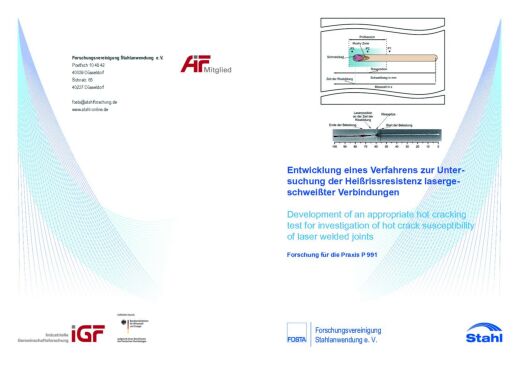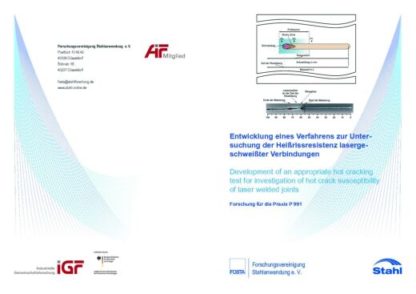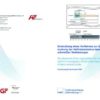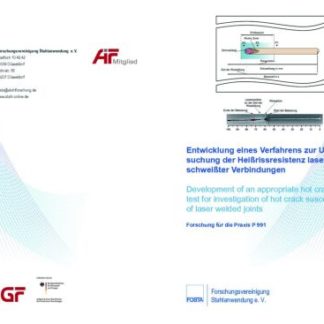Description
P 991 – Development of a method for investigation of hot crack resistance of laser welded joints
The weldability of CrNi, CrNiMo, CrNiMn and MnCr alloyed austenitic, austenitic-stainless and ferritic steels with regards to their susceptibility to hot cracking in laser beam welding has been examined and quantified.
During the research project, an FEM analysis was applied to determine locations on the sample surface that have a high ´concentration of local strains, leading to hot cracking formation. The measurement of the local strains was carried out using an optical 3D deformation monitoring system (Digital Image Correlation), diodelaser and corresponding interference filters. This construction enabled the detection of the local strain distribution during the welding process. The susceptibility to hot cracking of the investigated materials was determined qualitatively and quantitatively.
During the initial experiments, and in order to determine the boundary conditions of the new test, the susceptibility of various austenitic steels to hot cracking was examined using the CTW-test (Controlled Tensile weldability). In addition, the specimen’s geometry has been optimized using FEM analysis for longitudinal and transverse loaded specimen’s types. A new test program – test matrix, was further optimized and developed. Using this optimized test matrix, the hot cracking susceptibility of all investigated steels has been quantified.
By determining the critical ombination of the strain, the strain rates and the measurement of crack length, a quantitative evaluation of the susceptibility to hot cracking could be carried out on welded joints. The results showed that the MnCr steel, the dual-phase steel (DP) and complex-phase steel (CP) have a higher resistance to hot cracking in comparison to the ypical austenitic steels.
Moreover, the hot cracking esistance for some steels was investigated using the self- loaded test (SEP 1220). The results showed a wide ispersion of results, preventing a meaningful application of this test. During the project, a new testing technology and test facility have been established.
The research project IGF-No. 17781 N from the Research Association for Steel Application was supported by the Ministry of Economic Affairs and Energy through the German Federation of ndustrial Research Associations (AiF) as part of the programme for promoting industrial cooperative research IGF) on the basis of a decision by German Bundestag. The research project has been carried out at Bundesanstalt für aterialforschung und -prüfung (BAM), Fachbereich 9.3 chweißtechnische Fertigungsverfahren, Berlin.
Only available in german language.
Published in:
2016
Authors:
M. Rethmeier, A. Gumenyuk, N. Bakir




